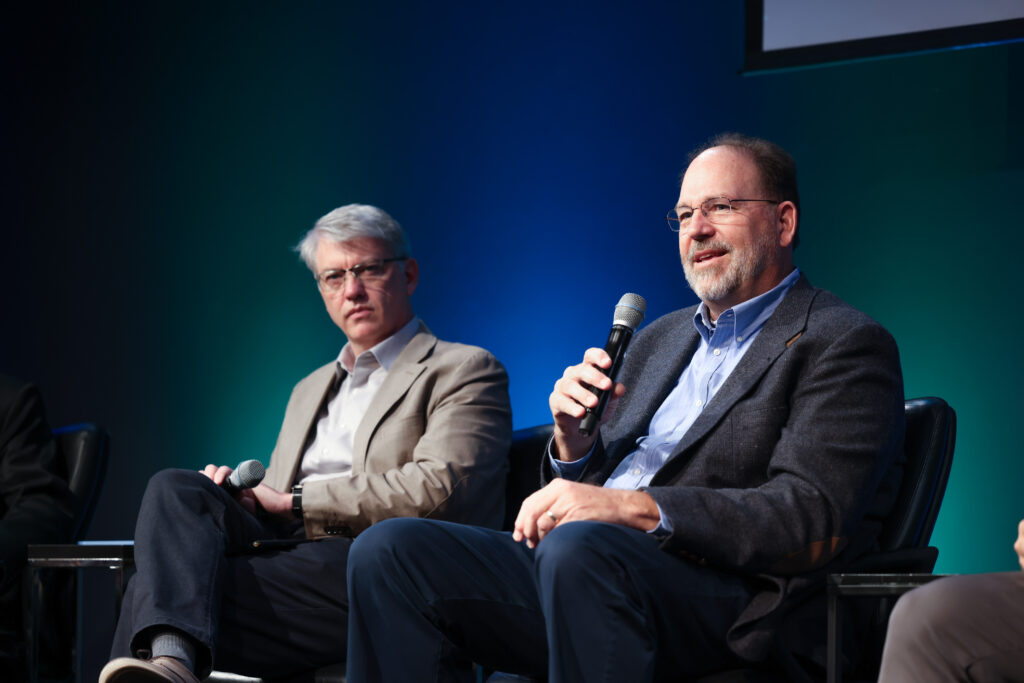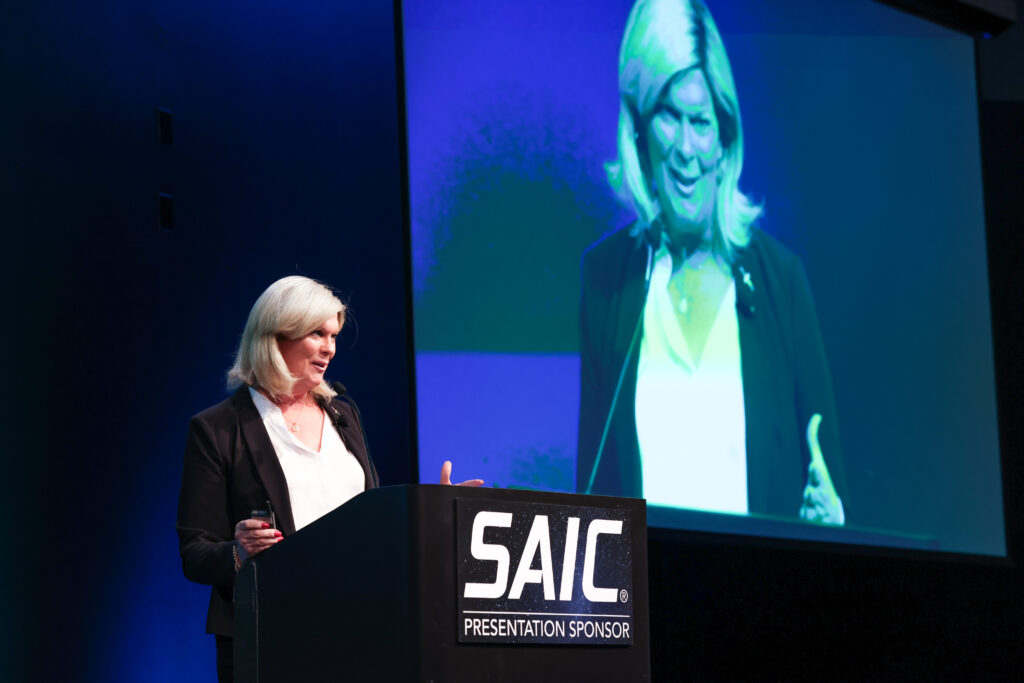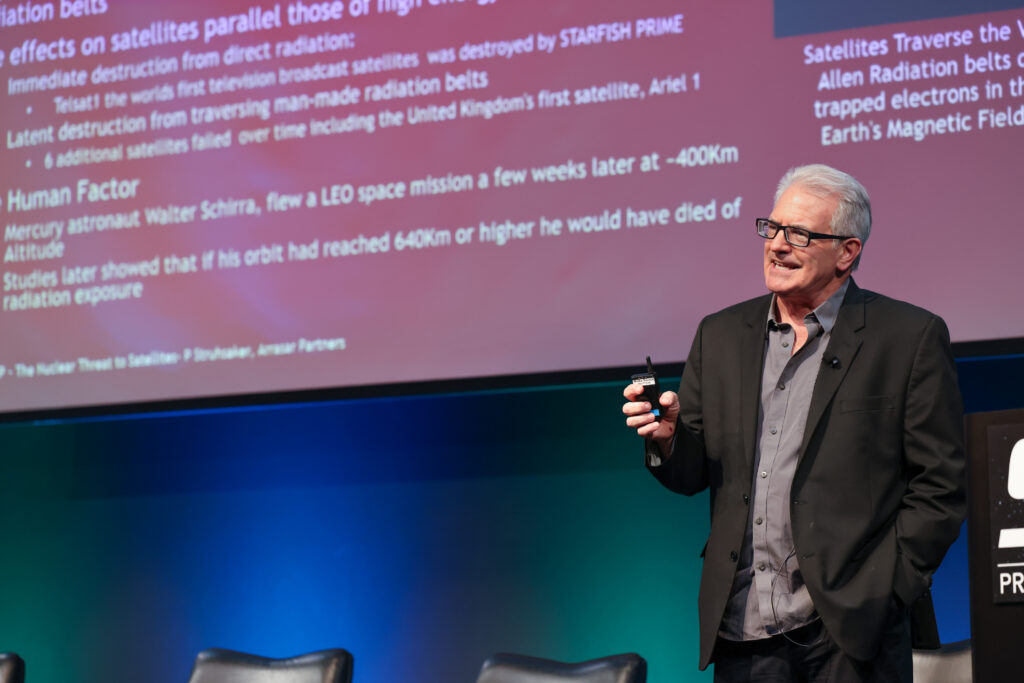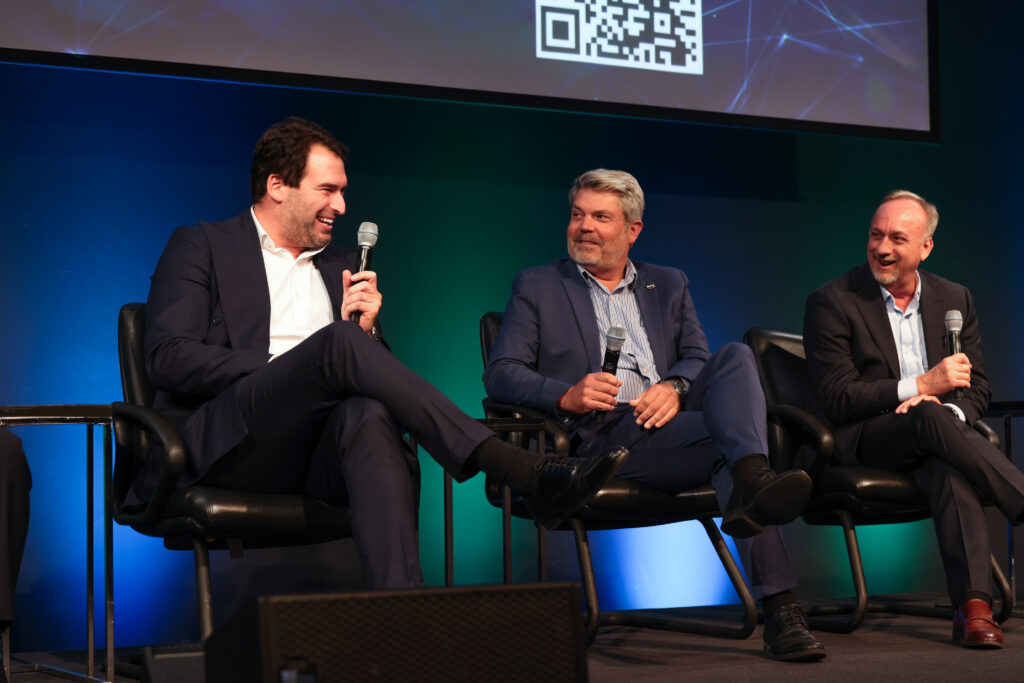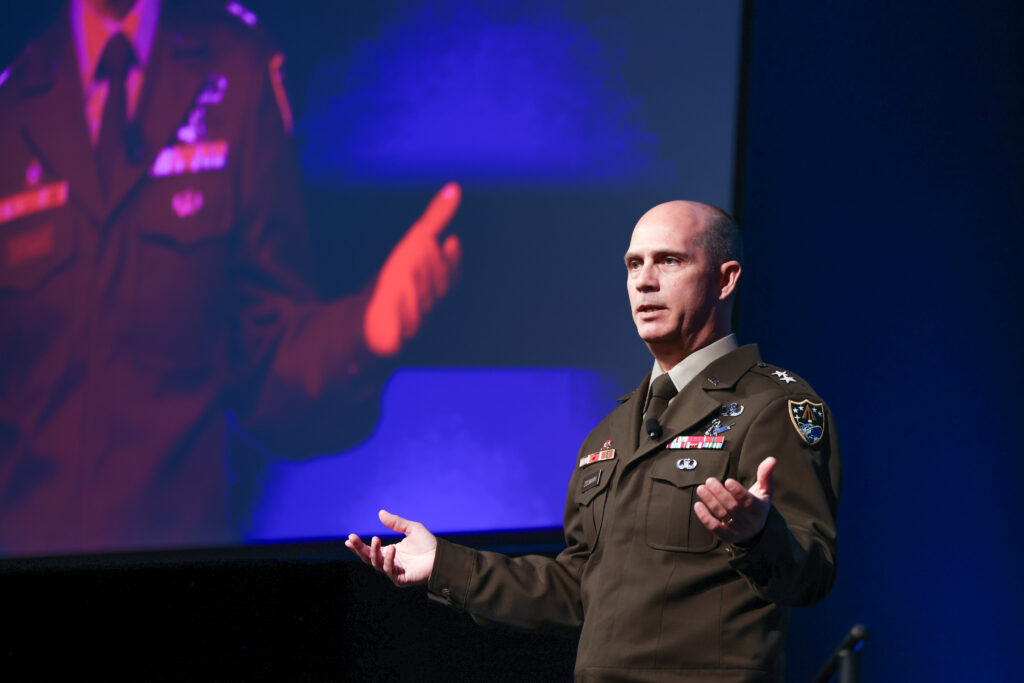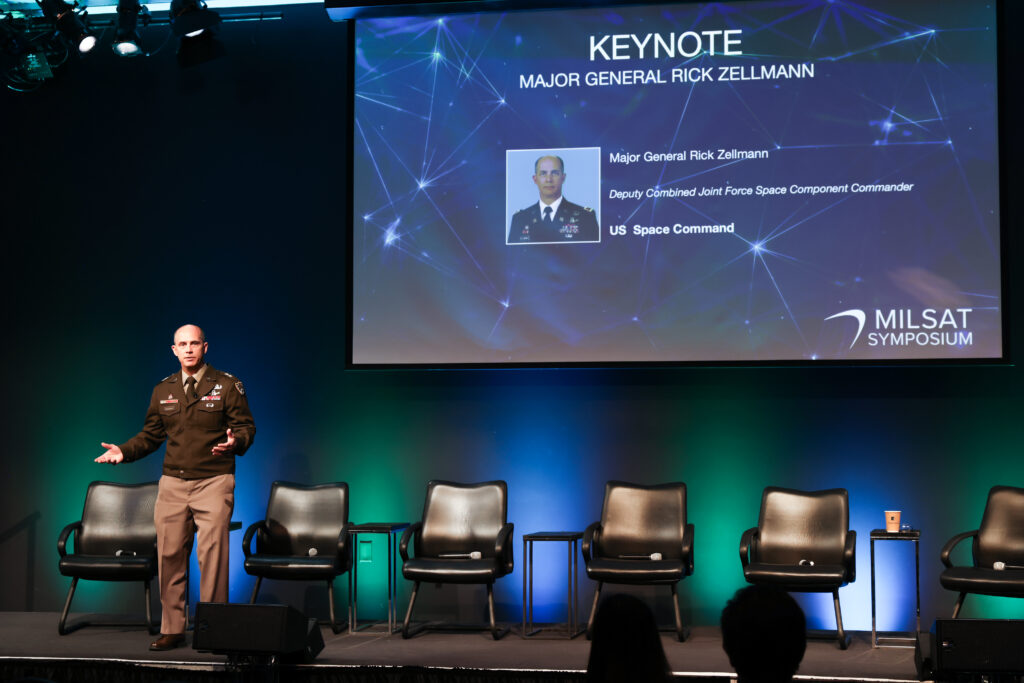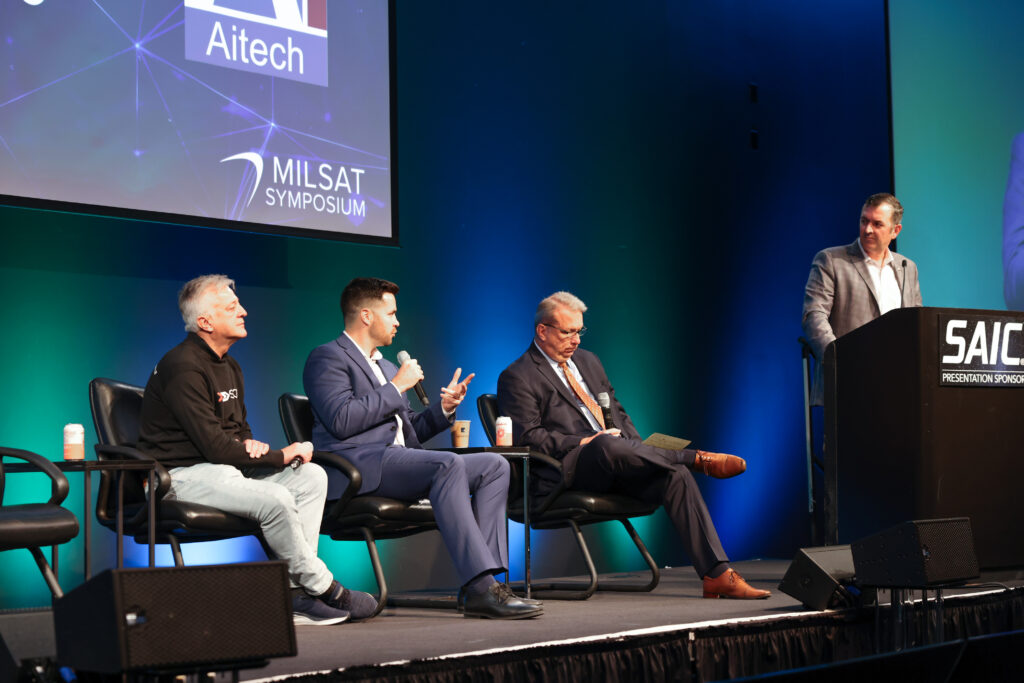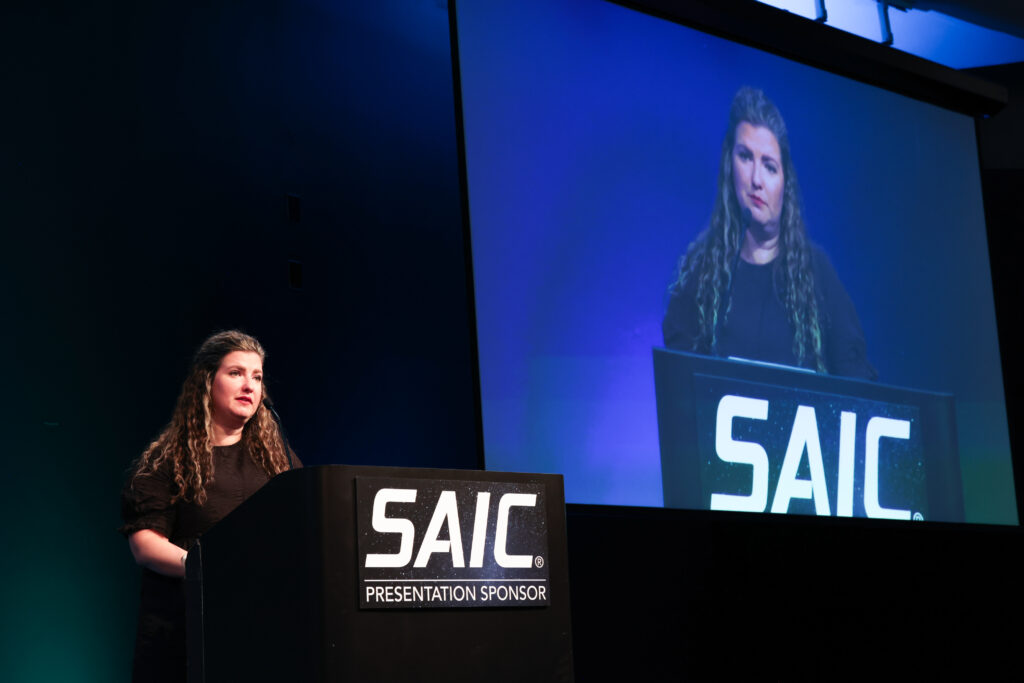By Chris Forrester
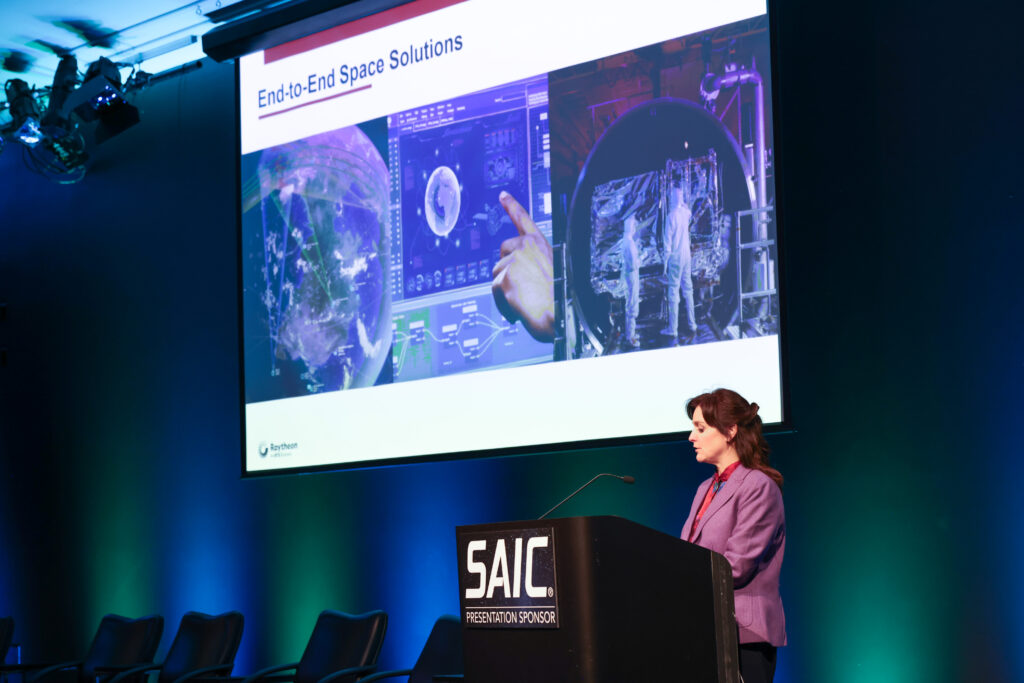
Melinda Milani is Raytheon’s Area Director of its National and Tactical System (NTS) strategic business unit. NTS is a diverse portfolio with programs serving DoD and Intelligence customers by delivering solutions such as distributed tactical mission management, ground systems, software development, multi-source data sensing and fusion, space-rated avionics and electronics, data processing, and advanced payloads.
She updated delegates attending the Silicon Valley Space Week with a valuable snapshot of one of the very largest contractors to the Dept. of Defense. She praised the event overall as being an “invigorating” conference where she could sense the passion in every speaker’s voice for their roles in the space industry.
Milani explained how in her years of experience and working with customers in space domain awareness, tactical mission control and sensing, and how she continues to be amazed by the benefits of working in collaboration. “Industry, government, civilian, military, domestic and our international partners. Today I can share how Raytheon is working in collaboration with many of you in this room and beyond to address our mission challenges.”
Raytheon is an RTX business (comprising Collins Aerospace, Pratt & Whitney and Raytheon) which serves customers in the commercial airspace and defense industries. “We provide complementary combined offerings and world-class engineering to deliver innovative solutions,” said Milani.
“We cover a lot of ground as a company. Our R&D divisions are collaborating like never before including with non-traditional partners and companies to find technology synergies and where operational lessons learned can prove life-cycle affordability across the board. Our industry must act to effectively integrate sensors and systems to enable multi-domain warfare.”
She said that space was far from an isolated domain. “Space is a critical enabler in a strategic environment. We are all aware that our adversaries are adapting, and we are in a race to outpace them.” She explained that Raytheon and the industry was embracing new technologies with the mission’s timeline always being key.
“We have to get this critical information to the tactical edge faster than ever before. Our solutions are indispensable for modern warfare.”
Raytheon uses modern analytical tools to understand the tasks from its clients, government, military, NASA and the intelligence community. Raytheon was also very active in disaster relief work in the US and around the globe.
Milani stressed that the space industry could not fall behind. “There is increased tension around the planet,” and she added: “We dare not be in a position where we are ‘out of time’.”


